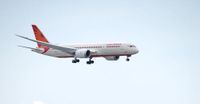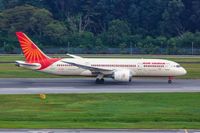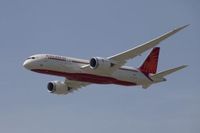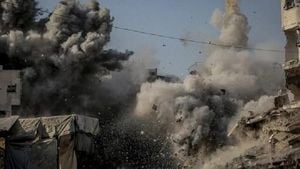On the evening of October 4, 2025, as Air India flight 117 descended toward Birmingham, England, an unexpected alarm jolted the cockpit. The plane’s ram air turbine (RAT)—a backup emergency power system typically reserved for the gravest in-flight contingencies—had automatically deployed at just 400 feet above the runway. The aircraft, a Boeing 787 Dreamliner, landed safely, and none of the passengers or crew suffered injuries. Yet, the incident has set off ripples of concern throughout India’s aviation sector, raising urgent questions about the reliability of one of the world’s most advanced commercial jets.
The RAT, a small propeller that drops from the aircraft’s fuselage, is designed to generate emergency power if the main engines lose thrust, hydraulic pressure plummets, or electrical systems fail. Its deployment is rare and almost always signals a serious malfunction. That’s why the events aboard AI117 have so alarmed pilots and regulators alike. According to Air India’s official statement, initial checks after landing found “all electrical and hydraulic parameters were normal,” and the plane “performed a safe landing at Birmingham.” Still, the anomaly was enough for Air India to immediately ground the aircraft for further inspection and cancel the next scheduled flight out of Birmingham, AI114 to Delhi. Passengers were rebooked, and the airline stressed, “The safety of passengers and crew remains top priority.”
But the implications extend far beyond a single flight. India’s Directorate General of Civil Aviation (DGCA) launched a comprehensive technical review, and early findings echoed the airline’s: no system faults or maintenance irregularities were detected. Yet, as the DGCA itself noted, the RAT’s activation under otherwise normal conditions is “highly unusual.” Aviation analysts told The Aviation Herald that such a deployment on final approach could point to a false trigger or a sensor malfunction, but they emphasized the need for a thorough investigation to rule out deeper systemic vulnerabilities.
For many, the incident brought a disquieting sense of déjà vu. Just four months earlier, on June 12, 2025, another Air India 787 crashed near Ahmedabad, killing 241 of 242 people onboard and 19 on the ground. The preliminary accident report found that the fuel control switches on both engines had somehow been moved from the “run” to “cutoff” position seconds after takeoff, starving the engines of fuel and causing a catastrophic power loss. The RAT deployed as designed in that emergency, but the aircraft could not be saved. The lone survivor of the Ahmedabad crash, Vishwash Kumar Ramesh, later described flickering lights and severe vibrations as the plane lost power. Families of the victims have since filed lawsuits in the United States against both Boeing and Honeywell, alleging that a defective switch design contributed to the disaster. Both companies maintain that their equipment meets all safety and regulatory standards.
The Federation of Indian Pilots (FIP), representing more than 6,000 aviators nationwide, has responded to the Birmingham incident with a sense of urgency. In a letter to the DGCA, the union called for immediate inspections of all Boeing 787s operating in India, and even suggested that the fleet could be temporarily grounded until the root cause is identified. “I have never heard of the RAT being deployed automatically without any hydraulic loss, power loss or failures,” said Capt. Charanvir Singh Randhawa, FIP president, in an interview reported by the Associated Press. “It’s a serious concern that warrants a detailed inquiry.”
As of April 2025, Air India operates 34 Boeing 787 Dreamliners, making it one of the largest operators of the type in Asia. The FIP’s call for action is not limited to Air India’s fleet; the union wants regulators to examine every 787 flying in Indian skies for potential electrical issues. Some pilots have gone further, advocating for a temporary grounding of select aircraft until a clear explanation emerges. The DGCA has stopped short of issuing a grounding order but has requested that Boeing assist in the ongoing diagnostic checks.
The incident has reignited scrutiny of the Dreamliner’s safety record, both in India and internationally. The 787, often hailed for its cutting-edge composite structure and advanced systems, has nonetheless been dogged by reports of maintenance anomalies and electrical glitches since its introduction. For Air India, the stakes are especially high: the June crash was among the worst aviation disasters in the country’s history, and the memory remains raw for families of the victims and the broader public. According to Bloomberg, families have filed lawsuits not just against aircraft manufacturers but also against component suppliers, arguing that design flaws may have played a role in both the crash and the recent emergency deployment.
In the aftermath of the Birmingham incident, Air India was quick to reassure the public. “All electrical and hydraulic parameters were found normal,” the airline reiterated, and it promised that “further checks” would be conducted before the aircraft was returned to service. The DGCA’s technical review, meanwhile, has so far found no evidence of system faults or maintenance lapses. Yet, as aviation safety experts point out, the mere fact that a last-resort emergency system could activate without a clear underlying failure is itself a cause for concern. “Any uncommanded RAT deployment warrants a thorough technical audit,” one analyst told The Hindu Business Line, “as it could indicate systemic issues.”
The investigation is ongoing, and regulators have not yet determined whether the RAT’s deployment in either the June crash or the latest incident was a cause or a symptom of wider problems. The DGCA has not publicly confirmed whether it will expand its inquiry to include all Boeing 787s in India, nor has it responded to specific claims made by the pilots’ association. Boeing, for its part, has referred questions to India’s Aircraft Accident Investigation Bureau, which has yet to issue a public statement.
For now, passengers and crew can take some comfort in the professionalism of Air India’s flight teams, who handled both emergencies with composure and skill. But the events of this year have underscored a stark reality: in modern aviation, even backup systems behaving as designed can sow new doubts about an aircraft’s resilience. The margin for error is vanishingly thin, and the industry’s response to these incidents will shape public confidence in the Dreamliner—and in air travel as a whole—for years to come.






